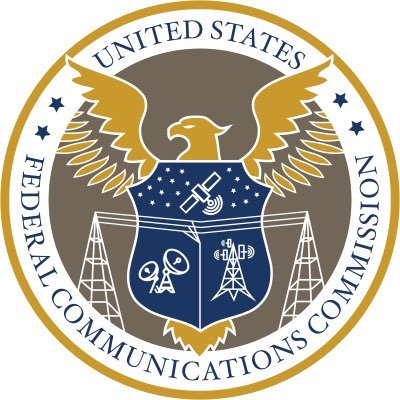Introduction
The Federal Communications Commission (“FCC” or “Commission”), has recognized that, as radio frequencies become increasingly crowded, using spectrum efficiently is more important than ever. The Commission has also recognized that setting aside the 5.9 GHz band for dedicated short-range communication (DSRC) has yielded lackluster results. Accordingly, it is appropriate that the Commission is now revisiting this band to evaluate how better to use wireless resources.1 Use of the 5.850-5.925 GHz Band, Notice of Proposed Rulemaking, ET Docket No. 19-138 (December 12, 2019). [hereinafter “NPRM”] https://ecfsapi.fcc.gov/file/1217200308588/FCC-19-129A1.pdf.
The Commission’s proposal to split the band to allow some unlicensed use while preserving part of the band for intelligent transportation systems (ITS) not limited to DSRC is a step in the right direction. The Commission should go further and designated the entire band as unlicensed.
ITS Lacks a Compelling Value Proposition in the Band
The Commission should not be swayed by the noble claim that keeping the band reserved for DSRC (or another ITS standard) is necessary to save lives. Indeed, if it were true that maintaining the current allocation were the only way to stop the tens of thousands of traffic fatalities per year, then the Commission surely would not alter it.
The choice before the Commission is not between saving lives or not saving them. The Commission already recognizes that, even if connected vehicle technologies are to remain in the band, they do not need the full 75 MHz to operate.2NPRM, ¶ 21. A much smaller allocation has already proved ample in other countries,3Id. so reducing the allocation to 30 MHz is, if anything, still too generous to ITS uses. The real choice is between generous interference protection for immature technologies, or slightly reduced but still generous interference protection for immature technologies.
It is true that ubiquitous vehicle-to-vehicle communication would improve traffic safety and reduce fatalities. But that hypothetical world would require all, or a large majority of, vehicles to have interoperable devices that transmit information and actually avoid collisions. Current technological developments have not achieved — and are nowhere close to achieving — that goal. Deployment so far has been extremely limited and performance metrics suggested by some automakers paint a no more optimistic picture.
Automobile manufacturers have pushed for an interim buildout requirement of “[d]eployment of 2 million V2X radios within five years.”4Association of Global Automakers, Ex Parte Presentation, ET Docket No. 13-49, GN Docket No. 18-357, May 17, 2019 at 7. https://www. globalautomakers.org/As-Filed%20Global%20Automakers%20Ex%20Parte_1.pdf. With approximately 272.5 million vehicles registered in the United States as of 2017, 2 million radios amounts to 0.7 percent penetration.5Department of Transportation, Bureau of Transportation Statistics, “Number of U.S. Aircraft, Vehicles, Vessels, and Other Conveyances,” 2019. https://www.bts.gov/content/number-us-aircraft-vehicles-vessels-and-other-conveyances. This figure means that it is very unlikely that any two vehicles that might be involved in a collision will both be equipped with vehicle-to-vehicle radios that could prevent it. Saving lives is important, but these kinds of numbers will not accomplish that goal.
The suggested “final buildout requirement” would see radios deployed in “an amount equivalent to 75% of new light vehicles sold in the U.S.” within ten years.6Global Automakers, Ex Parte at 7. https://www.globalautomakers.org/As-Filed%20Global%20Automakers%20Ex%20Parte_1.pdf With approximately 17.2 million light vehicles sold in the United States in 2018, this equates to 12.9 million radios or approximately 4.8 percent of the total U.S. fleet.7Bureau of Economic Analysis, “Light Weight Vehicle Sales: Autos and Light Trucks,” Dec. 6, 2019. https://fred.stlouisfed.org/series/ALTSALES#. If, optimistically, automakers are able to deploy ever greater numbers of radios in the meantime the actual number would be somewhat higher. But with a fleet turnover rate of about fifteen years, it will almost certainly fall well short of a majority.8Hart Schwartz, “America’s Aging Vehicles Delay Rate Of Fleet Turnover,” The FUSE, January 23, 2018. http://energyfuse.org/americas-agingvehicles-delay-rate-fleet-turnover/. Moreover, auto sales are slumping, which could extend out the deployment schedule.9Rob Stumpf, “US Auto Sales in 2020 Are Already Off to a Troubling Start,” The Drive, January 31, 2020. https://www.thedrive.com/ news/32033/u-s-auto-sales-in-2020-are-already-off-to-a-troubling-start. The promised benefits of ITS in the 5.9 GHz band that have not materialized over the first two decades are, therefore, unlikely to come to fruition with an additional one.
Moreover, automakers are not united on which ITS standard to deploy.10 Most notably the divide between DSRC and Cellular Vehicle-to-Everything. See “5G and Automotive Cellular Vehicle-to-Everything (C-V2X),” Qualcomm, 2016. https://www.unece.org/fileadmin/DAM/trans/doc/2017/wp29grrf/S2_P2._QC-5G-ConnectedCars.pdf. The Commission is right to allow for alternative standards to compete for the market alongside DSRC,11NPRM, ¶ 24. but the disunity of automakers makes divided deployment a possibility: two cars that are both equipped with vehicle-to-vehicle radios could still crash simply because the standards do not interoperate. This is a serious issue the auto industry must sort out, and it is another reason to expect further delay — and therefore greater opportunity cost of continuing to set aside the 5.9 GHz band.
ITS is not the only safety-conscious potential use of the band. Unlicensed spectrum can also be a powerful resource for safety. Much of the Commission’s ongoing work is premised on the idea that connectivity, much of which relies on unlicensed spectrum, saves lives.12See e.g. “Promoting Telehealth for Low-Income Consumers,” Notice of Proposed Rulemaking, WC Docket No. 18-213. https://ecfsapi.fcc.gov/file/07112047924899/FCC-19-64A1.pdf; “Connect2HealthFCC.” https://www.fcc.gov/about-fcc/fcc-initiatives/connect2healthfcc. Lifesaving applications from remote doctor visits to using Wi-Fi calling to reach 911 all rely on unlicensed spectrum.
The Commission is right to inquire about other wireless technologies that may provide functionally equivalent safety gains without the kinds of ITS services previously contemplated in the 5.9 GHz band.13NPRM, ¶ 59-60. It remains an open question whether connected vehicle technologies are the best way to improve road safety. Other assistive technologies that rely on only one vehicle, such as automatic braking and steering, are already seeing wide deployment. In fact, the development of autonomous vehicles is proceeding largely without reliance on vehicle-to-vehicle communication.14 See e.g. Ron Amadeo, “Google’s Waymo invests in LIDAR technology, cuts costs by 90 percent,” Ars Technica, Jan. 19, 2017. https://arstechnica.com/cars/2017/01/googles-waymo-invests-in-lidar-technology-cuts-costs-by-90-percent/; Jacob Bandes-Storch, “Introducing Worldview,” Cruise, Feb. 15, 2019. https://medium.com/cruise/introducing-worldview-749aaf98112d; “Autopilot,” Tesla. https://www.tesla.com/autopilot.
The Preferred Approach
The NPRM is too favorable to automakers by allowing them to retain access to a significant portion of this largely fallow band without paying for it. The Commission should remove any favoritism for connected vehicle technologies and require automakers to participate in the spectrum marketplace like other private actors who use the airwaves for critical activities. Auto safety is certainly important, but it unclear why this should entail the gifting of spectrum to automakers for that purpose any more than the efficacy of seatbelts and airbags means that the government should provide them for free.
ITS services could reasonably be deployed in alternative bands.15NPRM, ¶ 61. The Commission should move forward confidently with its many ongoing efforts to open up spectrum for private, licensed use, and automakers should be expected to get on board with everyone else in participating in the market for spectrum licenses. Other bands would provide the same, if not better, connectivity for ITS services. Automakers could bid in upcoming auctions of mid-band licenses in the 2.5 GHz, 3.5 GHz, and 3.7-4.2 GHz bands. Higher bands might also work even better for short-range communications — as much proposed vehicle-to-vehicle communication is — and the 37, 39, and 47 GHz auctions are open to automakers as well. It may also be economical for car companies to contract with existing licensees with more experience at operating wireless networks, just as they have done for prior connected vehicle applications.16 See e.g. “Connected Car from AT&T,” 2019. https://www.att.com/plans/connected-car.html. Changing bands may be inconvenient for some automakers, but, as the Commission notes, many have already deployed such technologies in bands other than 5.9 GHz in other countries.17 NPRM, ¶ 21.
The Commission should always exercise caution in allocating bands for unlicensed use since it is difficult to repurpose unlicensed spectrum or restrain operators once they begin transmitting. Allegations of congestion in current unlicensed bands should not, on its own, compel the Commission to allocate more spectrum for unlicensed use. Because unlicensed spectrum does not have the benefit of market prices to force users to economize on its use, the Commission must be wary of it falling prey to overuse. The congestion that gives rise to calls for more unlicensed spectrum could be a symptom of such overuse.18See generally, Comments of R Street Institute in the Matter of Unlicensed Use of the 6 GHz Band, ET Docket No. 18-295 at 2-3. https://www.rstreet.org/wp-content/uploads/2019/02/RSI-6-GHz-Comments-11.pdf. Unlicensed spectrum has permitted significant productive activity in the past, however, and additional unlicensed spectrum could be a beneficial change in the spectrum landscape.
Given these economic prerequisites and a policy decision to make more spectrum available for unlicensed use, the 5.9 GHz band is ideal. Because it is adjacent to both the existing 5 GHz unlicensed band and potential unlicensed use of the 6 GHz band, there is great potential for economies of scale. A contiguous block of unlicensed frequencies would allow for wide channels and greater throughput which would result in greater efficiency compared to many isolated bands even if they total the same bandwidth when aggregated.
Moreover, allocating the entire 5.9 GHz band to unlicensed use will allow for wide Wi-Fi channels to be achieved without designating the entire 6 GHz band as unlicensed. In turn, the Commission could exclusively license the upper 6 GHz band as a step in the Commission’s ongoing efforts to free up mid-band frequencies.
Conclusion
We thank the Commission for launching this proceeding and seeking input on how to improve road safety while also promoting efficient use of spectrum and enhancing broadband connectivity for all Americans. We look forward to engaging further with the Commission and other commenters on these issues throughout the proceeding.



 The FCC
The FCC